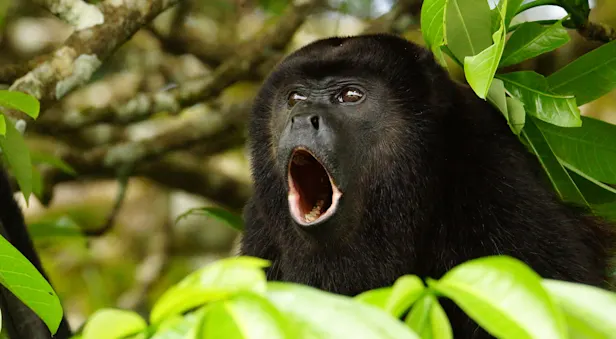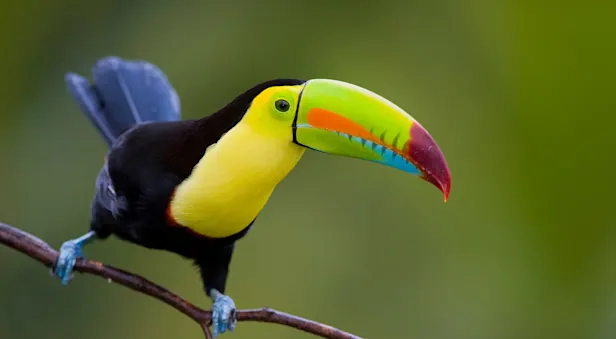Bat Facts | Costa Rica Wildlife Guide
The most numerous mammals found throughout Costa Rica are, by far, bats. You may easily come across them slumbering by day halfway up a tree, folded up in a banana palm or roosting inside a cracked fence post. Bats are nocturnal and most are lunarphobic, which means they avoid bright light, even moonlight. While most bats feed on insects, others eat fruit or lap nectar from night-blooming flowers. A few species feed on fish, frogs and small vertebrates. But no matter what they feed on, bats are highly beneficial, both ecologically and economically, especially if left alone.
There are more than 100 native bat species in Costa Rica, and they come in a variety of sizes and colors. They range in size from the large Vampyrum spectrum, or false vampire bat, with a wingspan of nearly 3 feet, to the Rhynchonycteris naso, or proboscis bat, which weighs less than two U.S. pennies. Despite some bat species’ peculiar looks, these creatures are generally harmless to humans and are actually quite helpful as pollinators, seed dispersers, and pest exterminators. The majority of these animals are frugivores, such as the large Jamaican fruit bat and tent-making bat, or insectivores, like the rare, white Northern ghost bat.
Vampire bats are a different matter. Although these amazing mammals have been known to adopt orphans and to risk their lives to share food with roost-mates, they have also been of serious concern to Latin American ranchers. This species causes approximately $100 million in damage each year on livestock in Central and South America. Vampire bats land on, or close to, sleeping mammals, preferably cattle. Using two razor-sharp incisors, they will puncture the farm animal, and aided by the glycoprotein in their saliva that keeps blood from clotting will squat beside the wound and lick up the blood while it flows.
Conservation officials and ranchers have made progress in controlling vampire bats where they are a problem, avoiding the needless killing of beneficial species. However, much remains to be done. Vampire bats are only one species of at least 110 in Costa Rica, and humans usually are not at risk of being bitten.
Bats have developed a highly sophisticated sonar system called echolocation. These creatures emit calls that bounce off objects around them and send signals back. As a result, bats can determine how far away an object is, how big it is, and even what texture it might have.
One of the most interesting types of bat, which usually roost near water, is the greater bulldog or fisherman bat. Cheek pouches, pointed ears and a blunt nose give this bat the appearance of a bulldog, but its huge feet with long claws make it an outstanding angler. Fisherman bats use their finely tuned echolocation to detect the slightest ripples in water and will rake their feet along the water’s surface before snatching a slippery fish with their sharp claws.
Bats are very important as seed dispersers and pollinators. In fact, some plants depend completely on bats as their pollinators. Just after sunset, bats swoop through the air, capturing large amounts of mosquitoes, moths and other insects, lapping up nectar or feeding on fruit. Header Credit: Gavin Lautenbach




































